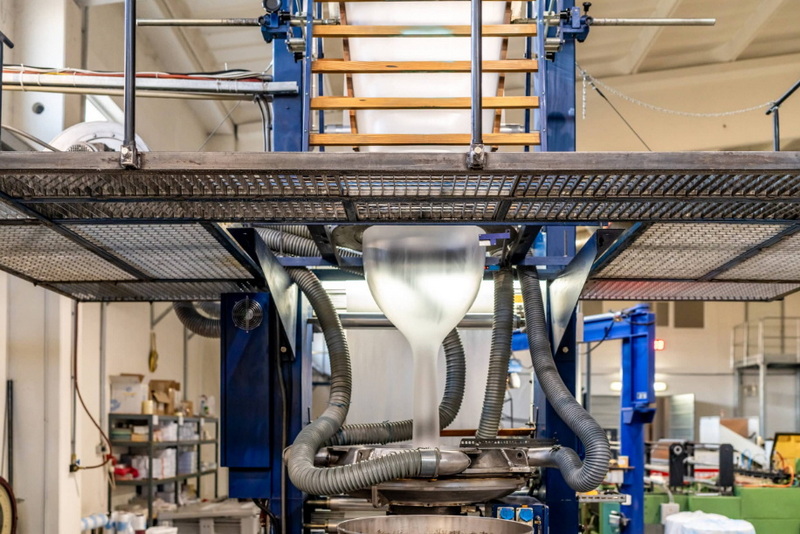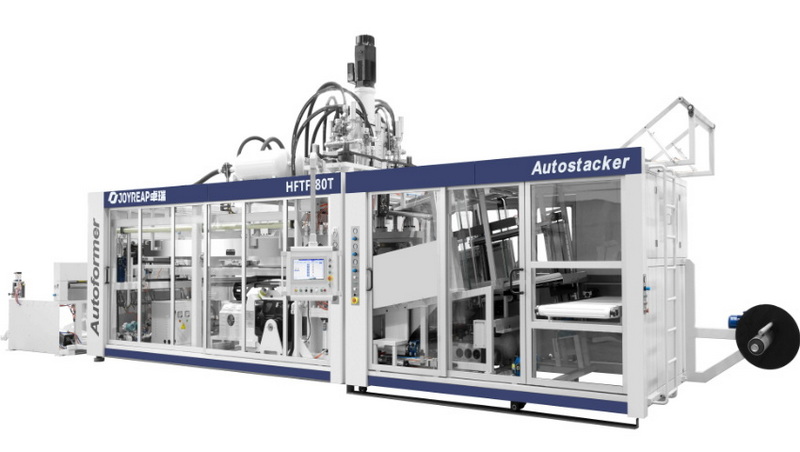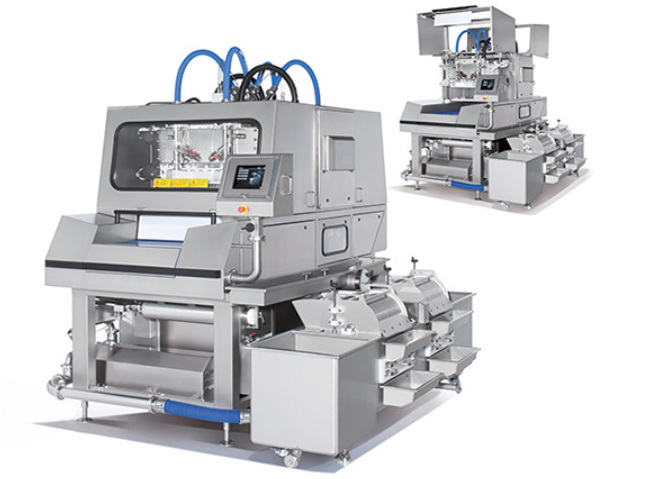Content Menu
● The Role of Viscosity in Plastic Extrusion
● How Inline Viscosity Measurement Works
>> 1. Visco-P by Promix Solutions
>> 2. SOflux by Sofraser
>> 3. AI-Enhanced Gray-Box Soft Sensors
● Benefits of Inline Viscosity Measurement on Plastics Extrusion Machinery
>> Process Stability
>> Cost Optimization
>> Quality Enhancement
● Implementation Case Studies
>> Case 1: XPE Pipe Insulation Optimization
>> Case 2: Recycled HDPE Pipe Production
● Integration with Industry 4.0 Ecosystems
>> Modern systems enable end-to-end digitalization through:
>> Key performance metrics:
● Addressing High-Viscosity Challenges
>> 1. Sofraser's Resonance Technology
>> 2. Promix's Shear Compensation
● Conclusion
● FAQ
>> 1. How does inline viscosity measurement handle colorant variations?
>> 2. What's the ROI timeline for these systems?
>> 3. Can systems monitor branched polymers differently?
>> 4. How often do sensors require calibration?
>> 5. Do these systems work with coextrusion lines?
● Citations:
Inline viscosity measurement on plastics extrusion machinery has revolutionized polymer processing by enabling real-time monitoring and optimization of melt flow properties. This technology addresses critical challenges in foam extrusion, sheet production, and profile manufacturing by providing actionable data to stabilize processes, reduce defects, and lower material costs. Below, we explore its mechanisms, benefits, and industry applications through detailed technical analysis and case studies.

The Role of Viscosity in Plastic Extrusion
Viscosity determines how polymer melts flow through extrusion dies, influencing:
- Foam density (e.g., XPS, XPE, or XPET foams)
- Wall thickness uniformity in pipes and films
- Surface finish quality
- Mechanical properties like tensile strength
Traditional offline methods (e.g., capillary rheometers) introduce delays of 30-60 minutes for sample cooling and testing[7], making them unsuitable for dynamic process adjustments. A 2019 study comparing inline and offline methods showed a 32% discrepancy in viscosity readings at 35% moisture content[7], highlighting the risks of relying on indirect measurements. In contrast, inline systems like Promix's Visco-P and Sofraser's SOflux measure viscosity directly in the melt stream with <5% error[3], enabling immediate corrections.
How Inline Viscosity Measurement Works
Modern inline viscometers combine advanced sensor technology with Industry 4.0 capabilities to analyze melt behavior under actual shear rates (0–1,000 s⁻⊃1;) and temperatures (100–350°C). Three key architectures dominate the market:
1. Visco-P by Promix Solutions
- Modular design integrates a capillary rheometer with a P1 cooling mixer to homogenize temperature (±1.5°C)[6].
- Converts real-time viscosity into melt flow rate (MFR) for polyolefins or intrinsic viscosity (IV) for PET[4].
- Features 12-month data storage and automated Cp/Cpk reports for statistical process control[6].
2. SOflux by Sofraser
- Vibrating sensor technology handles viscosities up to 1,000,000 mPa·s with <2% head loss[1].
- Self-cleaning design prevents material buildup during reactive extrusion[3].
3. AI-Enhanced Gray-Box Soft Sensors
- University of Manchester's hybrid system combines physics-based models with deep neural networks.
- Achieves 95% prediction accuracy for viscosity changes caused by screw speed (100–300 rpm) and temperature variations[5].
- Eliminates the need for invasive rheometers while maintaining throughput[5].

Benefits of Inline Viscosity Measurement on Plastics Extrusion Machinery
Process Stability
- Detects viscosity fluctuations as small as 500 Pa·s caused by:
- ±5% recycled material content
- ±0.5% blowing agent variations[6]
- ±3°C temperature drifts
- Case Study: Adjusting iso-butane levels in XPE foam production reduced viscosity from 20,000 Pa·s to 9,000 Pa·s, stabilizing cell structure density to ±1.5 kg/m³[6].
Cost Optimization
- Reduces scrap rates by 30% through early fault detection[6].
- Enables use of 15–20% lower-cost regrind materials without quality loss[1].
Quality Enhancement
- Improves foam cell uniformity (CV <8% vs. 15% offline[7]).
- Increases production speed by 22% in PET sheet extrusion through precise IV control[4].
| Parameter | Traditional Method | Inline Measurement |
| Response Time | 45–90 minutes7 | <5 seconds4 |
| Measurement Error | ±12%7 | ±5%3 |
| Data Granularity | Single-point snapshot | Continuous 100 Hz sampling |
Implementation Case Studies
Case 1: XPE Pipe Insulation Optimization
A European manufacturer integrated Visco-P with P1 cooling mixers to:
1. Monitor viscosity during startup phases (see graph below).
2. Adjust melt temperature from 135°C to 102.5°C while adding iso-butane.
3. Achieve target viscosity of 10,000 Pa·s ±500 Pa·s, improving foam density by 15%[6].
Case 2: Recycled HDPE Pipe Production
Using Sofraser's SOflux, a North American plant:
- Processed 40% post-consumer HDPE with viscosity variations up to 25%.
- Automated die gap adjustments maintained wall thickness within ±0.15 mm.
- Reduced energy consumption by 18% through optimized shear heating[3].
Integration with Industry 4.0 Ecosystems
Modern systems enable end-to-end digitalization through:
- OPC UA/ProfiNet interfaces connecting viscometers to MES systems.
- Predictive maintenance algorithms analyzing viscosity trends for screw wear.
- Machine learning models correlating viscosity with final product tensile strength (R⊃2;=0.92)[5].
Key performance metrics:
- 99.7% data availability over 12-month periods[4].
- <2 minute mean time to detect feedstock inconsistencies[5].
Addressing High-Viscosity Challenges
For elastomers and specialty polymers (50–10,000 Pa·s):
1. Sofraser's Resonance Technology
- Maintains accuracy at shear rates <1 s⁻⊃1; through adaptive frequency control[3].
- Handles filled compounds with 40% glass fiber content[1].
2. Promix's Shear Compensation
- Mathematical models correct for non-Newtonian effects in PVC foam[4].
- Real-time MFR conversion aligns with ASTM D1238 standards[4].
Conclusion
Inline viscosity measurement on plastics extrusion machinery has evolved from a quality control tool to a strategic asset enabling:
- 25–30% faster R&D cycles for new polymer blends.
- Near-zero defect production through IoT-enabled closed-loop control.
- Sustainable manufacturing via reliable recycled material processing.

FAQ
1. How does inline viscosity measurement handle colorant variations?
Sofraser's SOflux uses shear-independent vibration analysis to maintain accuracy despite pigment loadings up to 8%[3].
2. What's the ROI timeline for these systems?
Most users achieve payback in 6–9 months through 18–30% scrap reduction and 15% energy savings[6][1].
3. Can systems monitor branched polymers differently?
Yes. Promix's software automatically applies the Carreau-Yasuda model for LDPE and other shear-sensitive resins[4].
4. How often do sensors require calibration?
Annual calibration suffices for most applications, with automated drift compensation maintaining ±3% accuracy between services[3].
5. Do these systems work with coextrusion lines?
Absolutely. Multi-layer systems benefit from viscosity matching between layers, reducing interfacial instability by 40%[5].
Citations:
[1] https://trends.directindustry.com/sofraser/project-8994-139902.html
[2] https://www.promix-solutions.com/en/company/news-exhibitions/news-detail/inline-viscosity-measurement-the-key-to-optimization-in-light-foam-extrusion
[3] https://www.inventech.nl/files/product/Sofraser/PDF/sofraser_article_extrusion_plastic__elastomer_jun014.pdf
[4] https://www.ptonline.com/products/inline-viscometer-for-extrusion
[5] https://www.plasticstoday.com/extrusion-pipe-profile/advances-in-real-time-monitoring-of-polymer-melt-viscosity-during-extrusion
[6] http://www.extrusion-info.com/articles/4945
[7] https://onlinelibrary.wiley.com/doi/abs/10.1111/jfpe.13199
[8] https://journals.sagepub.com/doi/10.1177/0021955X19864400
[9] https://www.gneuss.com/en/polymer-technologies/extrusion/online-viscometer-vis/
[10] https://www.sofraser.com/products/soflux-extrusion-viscometer/
[11] https://www.mdpi.com/2073-4360/14/12/2316
[12] https://rheonics.com/products/inline-viscometer-srv/
[13] https://hydramotion.com/en/products/xl-series
[14] https://petpla.net/2023/07/25/inline-viscosity-measurement/
[15] https://www.plasticsmachinerymanufacturing.com/thermoforming/article/13001770/viscometer-provides-inline-measurement-for-extruder
[16] https://www.ptonline.com/articles/understanding-viscosity-in-extrusion
[17] https://www.petro-online.com/news/flow-level-pressure/12/sofraser/inline-viscosity-measurement-on-plastics-extrusion-machinerynbsp/29540






















